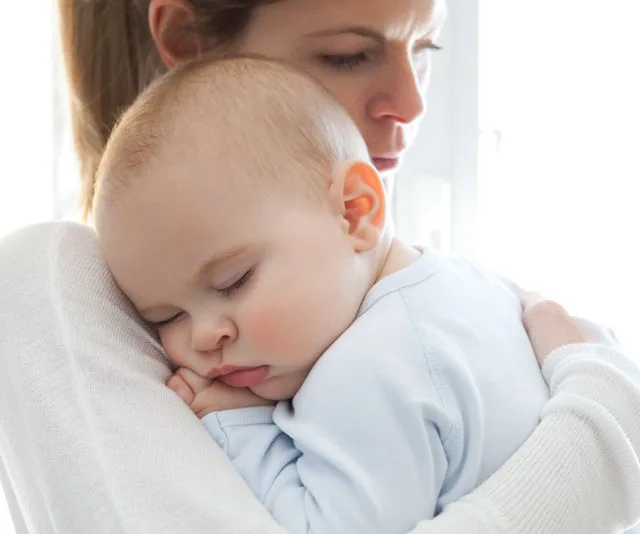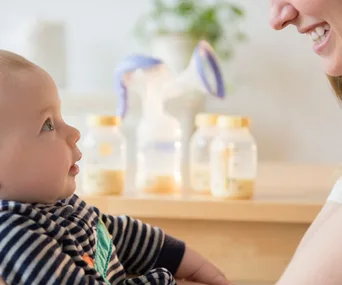It can be tough for parents to know how to nurse their little one back to health especially as babies have no way to communicate how they are feeling. Trust your parental instincts – nobody knows your baby better than you do.
If you think your child may be in pain or discomfort, consider giving paracetamol as directed for their age (weight).
If you are using Panadol Colour-free Baby Drops for children from 1 month to 2 years:
Follow the dosage instructions on the bottle; do not exceed the recommended dose unless directed by your doctor.
Maximum 4 doses in one day, or within any 24-hour period.
Do not use Children’s Panadol for more than 48 hours at a time, except on medical advice.
Children’s Panadol is not recommended for infants under one month of age.

If you think your child may be in pain or discomfort, consider giving paracetamol as directed for their age (weight). (Image: Getty Images.)
Here are some common illnesses that can affect your baby or toddler and how you can help…
Coughs and colds
It’s not uncommon for children to have up to six colds a year, with winter the most common time when colds are likely to occur.
Colds and most coughs are usually caused by viruses, so antibiotics won’t help for these. Signs of a cold include a stuffy or runny nose, sneezing, fever, headache and a cough.
There is no specific treatment for a cold, however you can help to relieve the symptoms by offering extra fluids, and encouraging nose blowing or using saline nose spray or drops to help clear the nose.
Paracetamol, used as directed for age, can also help reduce fever and pain. Seek medical advice if your child is off their feeds or not drinking, or if a cough persists as they may have a chest infection.
Croup
Croup is a viral infection which causes the swelling of the voice box and windpipe, and often starts like a normal cold which is followed by a harsh, barking cough.
This cough may be worse at night. A child with croup may also have a slight fever, and may make a squeaky noise when breathing in, called ‘stridor’.
While mild cases of croup can be treated at home by offering frequent drinks and keeping your little one calm (as breathing is often more difficult when your child is upset), it’s important to remember that croup can get worse quickly so seek urgent medical attention if your child is having trouble breathing.
Continues after video …
Fever
Fevers are extremely common in children, and are often the body’s way of fighting off infection by turning up the temperature and making it difficult for viruses and bacteria to thrive.
The body’s normal temperature is around 37˚C. If a child’s temperature is over 38˚C they are considered to have a fever.
If your child has a fever, dress them in light clothing and increase feeds or water intake. Sponging with lukewarm water may also offer some relief. Paracetamol, used as directed may help reduce a fever.
Ear ache
Babies and young children in particular are prone to ear problems, with most kids suffering from at least one ear infection by the time they are three.
Often, ear ache follows a cold and it can be difficult to tell whether a more serious ear infection is at play. Common signs of ear ache and infection include pulling or tugging at the ear, irritability, fever, difficulty sleeping, refusing food and slight deafness.
Consider using paracetamol to ease pain and fever. More serious ear infections may also need antibiotics and can cause the ear drum to rupture, so see your GP if pain lasts for several hours or increases.
Visit your doctor if you’re concerned about your baby’s health or if symptoms persist beyond 48 hours.

